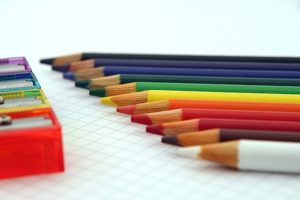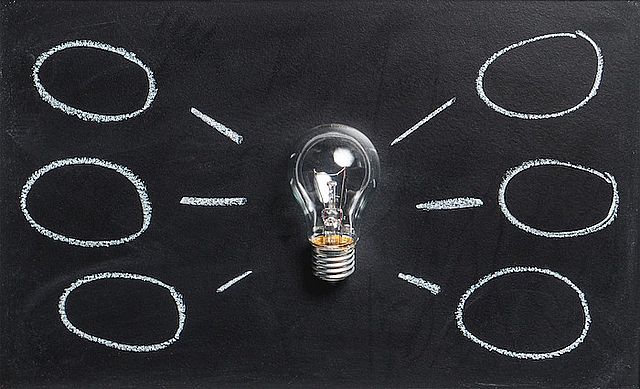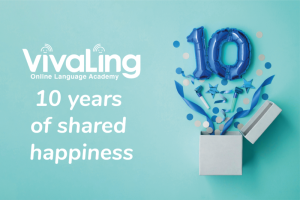Fear of error is the lock of learning. In the context of foreign languages, the avoidance strategy is its most common manifestation. The learner does not dare to answer, looks for the shortest and least risky sentences, or expresses himself in basic mode: “yes”, “no”, and “I don’t know”.
« When you forbid mistakes, you steal victory »
Antoine de Saint-Exupéry.
Are all mistakes equal when you speak in another language?
Is a fault more serious than a confusion?
Does a careless mistake carry the same weight as systematic misuse?
Can a false friend embarrass you?
Moreover, should errors be corrected?
To correct or not to correct errors when learning foreign languages

The question may come as a surprise, but the controversy is raging. Neuroscience supports correction. In his recent book, “Learning! The talents of the brain, the challenge of machines“, neuroscientist Stanislas Dehaene invites us to accept the error: “It is the very condition of learning, it allows the brain to update our mental models. »
(L’entretien du dimanche – Sud Ouest 21/10/2018)
When to correct? The dilemma in foreign language learning

“Mistakes should not be punished. They should be corrected. And the faster a correction is made, the more effective it is,” recommends Stanislas Dehaene. However, this advice is difficult to apply for foreign language teachers. Mastering a foreign language requires the acquisition of two skills: fluency and accuracy.
“Accuracy means the ability to speak correctly without mistakes. Fluency means speaking, reading, etc. with a natural pace and cadence without long pauses,” says Abbie, Master English Coach at VivaLing. A language teacher must work to balance the emphasis on the two: not to ensure accuracy while sacrificing fluency and causing a learner to second-guess everything and speak with long gaps or pauses; at the same time, not only encouraging fluency with no consideration of correct usage, especially mistakes that can affect the overall meaning understood by the listener (such as using the wrong verb tense, a “false friend” from the learners primary language, or a word with the wrong connotation in the target language).”
Optimize mistakes as a learning tool

“Errors are part of the process of acquiring a new language. At VivaLing, our teachers spot which parts were hard for the students to learn and then reinforce and pay more attention to the similar points in the next sessions, explains Jing, Mandarin master coach.
“The most important thing I would like parents to understand, continues Coach Abbie, is that it is important that language learners develop accuracy and fluency simultaneously and that both are equally important. »
As is often the case, the solution lies in a wide range of strategies, to be adapted to the student’s situation and personality.
When to focus on fluidity ?
“If the teacher and student carry a meaningful conversation, communication should be the most important thing, points out Jing. Once students have expressed themselves, the teacher can repeat their general idea using the appropriate vocabulary, grammar or mode of expression. Most of the students will realize their mistakes.”
This constitutes the subtle principles of delayed error correction. “It means allowing the learner to finish their thought or sentence (fluency) before addressing the errors (accuracy)” states coach Abbie.
“If we are working on a free activity where there are no specific instructions (for example, “What do you usually do on a weekday?”), I don’t correct or only slightly” confirms Nuria, Spanish master coach. “I just let the learner flow like it would happen in a real situation with natives (natives don’t correct you all the time).”
When to focus on precision ?
“On the other hand, when we are drilling a specific point of the language and the student makes mistakes, we correct them immediately. This part of immediate feedback is included in our Villa pedagogy,” says coach Jing, “so the students won’t repeat the same mistake over and over again.”
“In controlled practice activities,” Coach Nuria confirms, “the exercises involve specific instructions, such as: fill the gaps with the present tense. In this case, I try to point out all mistakes at the moment the learner says them. I also go back, if needed, to read a certain word or a specific point, so it helps the student to remember and consolidate. »
Solutions in action

At VivaLing, our coaches use mistakes to transform them into a learning accelerator. The subject is too broad to cover in a few lines the full range of their pedagogical tools. Let’s discover some of their basic strategies that will allow you to better decipher the videos of your children’s sessions….
The coach helps the learner to focus on one or two specific mistakes at a time
Coach Abbie likes to identify specific areas rather than trying to correct everything at the same time. She uses goal-setting and cueing as a strategy.
“A lot of learners have fossilized errors that they carry over from their primary language or from years of bad habits. It’s important that they are aware of these trouble areas and know that their errors often come from the same core mistakes. By identifying a weakness, we can sharpen our focus and offer specific praise and practice to help them turn the “not yet” into a “yes!” For example, many French learners have trouble knowing which verb form to use in present simple tense: “He walks vs. They walk” or “She has vs. We have.” Even when they do remember, sometimes they drop the pronunciation of the final “s”!!!
So I tell the learner that I’ve noticed they make this mistake often and I want to help them fix it. We come up with a cue or signal (such as drawing an “s” in the air with my finger) that we can associate with this specific error. Instead of interrupting them in the middle of a sentence, I will just make a motion with the signal, and the learner will restate what he/she has just said correctly. Another common error is forgetting to use the past tense. In this case, I just make a backward pointing motion with my thumb. The learner often knows the past tense form. He/she just forgot to use it and can fix the error without any interruption in fluency”
The coach involves the learner in the correction process
“We play at solving the mistake together,” says coach Nuria, “as if we had to find the answer to a riddle.”
According to the principle of delayed error correction, coach Abbie waits until the learner has completed his sentence or exercise to throw a clue such as “Number 3 seems weird…What do you think?”
The coach talks about mistakes in a positive way (and in affirmative mode)
“At VivaLing, “No, it’s not good” is prohibited,” explains coach Nuria. “We prefer to ask the learner, “Mh…. Are you sure about that?” because the last sentence stimulates curiosity and gives children a platform to think and decide for themselves. It teaches them to be critical of themselves. »
The coach rewards the solution of the error
“I seek to reward my learners twice as much if they correct their own mistakes (even with help),” underlines coach Nuria. “Indeed, they are actively reflecting and consolidating the notion in their brains. It’s double effort and responsibility in their own learning process! ».
An approach approved by Carol Dweck, Stanford Professor of Psychology. Her research shows that it is better to congratulate the work done by the child (then the effort is rewarded, whether the result is correct or incorrect) than the child’s intelligence (mistakes would then be a sign of the limits of intelligence: “I am not good at it. It is not made for me”).
The coach only corrects the necessary errors
How can a linguistic notion be corrected if the learner has not yet really learned how to use it? It is important to limit corrections to notions that the learner should already know. For the rest, the coach will be his student’s crutch to allow him to climb the successive steps.
Let us therefore encourage our children to consider their linguistic mistakes as an opportunity!





